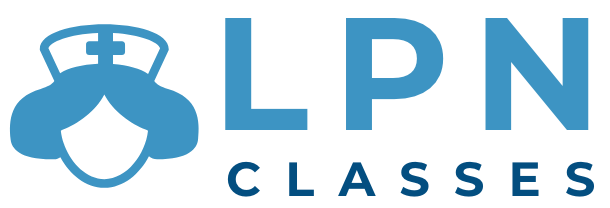

My name is Katie, and I have been a nurse for 10 years. My healthcare journey began in 2013 when I started as a CNA, eventually progressing through school to achieve my BSN. I specialize in Emergency Medicine and have worked as a Travel ER RN since the COVID-19 pandemic. Nursing has been life-changing for me. I strive to be the good in difficult situations and provide the best care possible to my patients.
Looking to start a career as a Licensed Practical Nurse? Here’s a clear step-by-step guide to help you understand the path—from enrollment to licensure. LPNs are essential to the healthcare system—they provide hands-on care, support patients through tough moments, and keep medical teams running smoothly.
Here’s a clear, realistic guide to help you understand how to go from curious to certified.

Before anything else, take time to understand what LPNs actually do. This isn’t just about reading a job description—it’s about asking yourself if the work fits who you are.
LPNs provide basic medical care like monitoring vital signs, giving injections, dressing wounds, and assisting patients with daily needs. They work under the supervision of Registered Nurses (RNs) and doctors, often forming the backbone of long-term care facilities, clinics, and hospitals.
It’s a career that requires compassion, patience, and a calm head—even on stressful days.
To enroll in an LPN program, you’ll usually need:
Some states or schools might ask for entrance exams like the TEAS (Test of Essential Academic Skills), which measures your basic knowledge in reading, math, and science.
Once you’ve got the basics in place, your next step is enrolling in an approved LPN training program. These programs are often offered at community colleges, technical schools, or vocational training centers.
Most LPN programs take around 12 to 18 months to complete. Expect a mix of:
Pro tip: Look for programs that are accredited and approved by your state’s nursing board. That ensures you’re eligible to take the licensing exam afterward.
After completing your training, you’ll need to pass the NCLEX-PN exam. This is the national licensing test for practical nurses, and it’s not something to take lightly.
The test is adaptive, meaning it changes difficulty based on your answers. It’s designed to measure not just what you know, but how you think as a nurse. Most programs offer NCLEX prep support, but it’s smart to supplement with practice questions, study guides, and review sessions.
Once you pass, you’re officially licensed to work as an LPN.
Every state has its own process, but generally, once you pass the NCLEX-PN, you’ll submit an application to your state’s board of nursing along with:
Once you’re officially licensed, you’re ready to start applying. Every state has its own pace, but when your name lands in the nursing registry, the doors open.
Where can you work? Pretty much anywhere healthcare happens. Some LPNs end up in hospitals or rehab centers. Others find their place in clinics, nursing homes, schools—even correctional facilities.
It helps to think about where you’d thrive. If you enjoy building longer relationships with patients, long-term care might be a great fit. Prefer a quicker pace and constant variety? A clinic or med-surg unit could keep you on your toes.
Whatever direction you go, expect your first job to teach you a lot—fast. You’ll grow into it. Everyone does.
LPN can be a launching point. Some stay in the role and find deep fulfillment in direct care. Others build on it—bridging to RN, diving into specialties, or continuing their education over time.
You don’t need to plan your entire future now. Just know this: once you’re in the field, you’ll start to see the possibilities for yourself.
Becoming an LPN doesn’t require years of schooling or thousands in student debt. It’s a focused, meaningful way to enter the healthcare field—and make a real impact on people’s lives.
Ready to take the first step? Use our form to explore LPN training programs near you and see where this path can take you.
Ready to kickstart your healthcare journey?
Fill out the form above, and let CNA Class Guide match you with the best CNA training programs in your area!

Copyright © 2025 LPN Class Guide
All Rights Reserved